#Canadian innovation history
Explore tagged Tumblr posts
Text
6 Forgotten Canadian Inventions That Changed the World (And Yes, One Involves Trash Bags!
Discover 6 amazing, forgotten Canadian inventions that shaped the world—from bras to IMAX! Learn the untold stories with a sprinkle of humor and a nod to Canada’s genius.
#travel around the world#uglyandtraveling#travel vlog#travel blogger#travel channel#ugly & traveling#travel#travel backpack#ugly and traveling#traveling vlog#canada Wonderbra#Canadarm space arm#Canadian breakthroughs#Canadian contributions#Canadian creative minds#Canadian engineering feats#Canadian heritage inventions#Canadian historical inventions#Canadian ingenuity#Canadian innovation history#Canadian innovations#Canadian invention achievements#Canadian invention contributions#Canadian invention culture#Canadian invention development#Canadian invention evolution#Canadian invention facts#Canadian invention heritage#Canadian invention impact#Canadian invention influence
0 notes
Text
youtube
I forgot to post about this back when it came out. But this was an interview with two prominent figures from the management side of the PWHL from a few days back. I was expecting it to be a bit dry, but they actually address quite a few prominent questions.
I was originally going to skip doing this one as it's somewhat long, but I've been seeing a number of things they talked about coming up in discussions here, so I thought y'all might be interested to hear what they have to say.
I'll transcribe what I personally found to be the most interesting elements that came up, but know I'll be cutting down some of the remarks and only doing some of the questions, so definitely watch the video for the full story.
Since this is already going to be a massive post I'll spare you my musings on the answers.
Transcriptions of some of the questions under the break.
At the table are Senior Vice President of Hockey Operations Jayna Hefford & Advisory Board Member Stan Kasten.
And I believe this was after Game 2 of the finals and before the start of Game 3.
For context on who these two are in a bigger picture, what little I know is:
Jayna Hefford is a HIGHLY successful and influential former Canadian hockey player who's been working in the field of women's hockey ever since she retired from playing. If I tried to sum up her career we'd be here all day, so let's just say she's in the Hockey Hall of Fame for a reason.
Stan Kasten comes from a background of running/managing large sports teams, though mostly baseball. He is even the current president of the Los Angeles Dodgers and also one of the co-owners. He seems to have had a brief foray into hockey as the president of the NHL's Atlanta Thrashers for a few years. The Thrashers no longer exist and I think they moved and became what are now the Jets? (I dunno, I shouldn't be your source for NHL history, that's for sure.)
--------------- INTRODUCTIONS ---------------
STAN KASTEN: I can’t describe the pleasure this is for me to be here [at the Xcel Energy Center in Minnesota]. The last time I was here I told you that I thought that day, the 13,000*, really convinced us that we were going to make this work.
[* the first home game for Minnesota had an attendance of 13,316.]
But even then I couldn’t have imagined how the year would play out. How we would set attendance records, sponsorship records, and viewing records. So our media strategy was a success. But of course the thing that made it work, really, was what I said opening day: we got the hockey right.
And that’s because of Jayna [Hefford] and her staff. You know, we didn’t know our playoffs ‘til after the last game on the last day. Who could have imagined that we’d put together a system that would've worked out that perfectly. You see how close and competitive the playoffs have been. And as exciting as this is for all of us, we can’t wait to get started on year 2, because we know with all Summer to prepare, it’s gonna be even better.
JAYNA HEFFORD: When we kicked off this league we had a few goals and—at least on the hockey side—one of them was to create parity across the league. And through the draft and the player dispersal, the player signings that we put in place, we were able to do that.
And to Stan’s point, I don’t think we could have wrote the script any better the way it played out and came down to the last game of the regular season to decide who was in the playoffs. We certainly achieved that.
Secondly, innovation and creativity was a priority for us. We wanted to find ways to improve the game. To make it more engaging for fans, to make it fun. We didn’t want to change hockey in the traditionalism of hockey, but we wanted to do things a little bit differently.
So implementing the Jailbreak rule, implementing the pick your own opponent, the Gold Plan*. All of those things are new. But I think right now, and of course we’re going to debrief post-season, but right now the response from all of those things has been overwhelmingly positive. So we will continue to try to be creative and think outside the box and present the game in new ways to people.
[* It didn’t come into play this season, so in case anyone isn’t familiar: The Gold Plan is the system by which after a team is out of contention for the playoffs during the regular season, any wins they get would be factored into where they’d be placed in the draft order for next season. It was designed to be an incentive for teams out of the running to still play their hardest and strive for wins.]
...
So excited to be here now for the next two or three games. And really it’s been a remarkable, amazing journey this last number of years, but really this last 8 or 9 months. And as Stan said, I don’t think I could have envisioned this playing out the way it did. The excitement around this, and the response from our fans, and response from media. So we’re just thrilled with where it’s at and I know this is gonna wrap up in a really great way in the next number of days.
...
--------------- LOOKING AHEAD, WHAT ARE THE CHANGES/CHALLENGES FOR NEXT YEAR? ---------------
STAN: We didn’t have our business staff in place until about 60 days before the season started. So we have a lot we can still do.
The most obvious one was merchandise. Having, you know, the amount of inventory that we needed was a challenge for us. Getting an online business started, in two countries, that was a challenge. So all these two country problems are different than other leagues.
By the end of the season we did really well on merchandise. But we have more coming and more designs and greater inventory. The one good thing is that we sold everything that we could make. I mean, it was just flying off the shelves when we could get it to arenas. And the online business has been strong also. Those things are challenging when they’re start-ups, and as I said, they’re start-ups in two countries, so we know how to do it now. It’s gonna get a lot better going forward.
JAYNA: And I think what everybody is waiting for is names and logos. So that’s one big thing that’s coming. So I think that’ll be really exciting to be able to build those brands and make those brands significant in the markets and communities we’re in.
STAN: It’s interesting how the name thing played out. We did not start out to do that, but because the lead time required in these things, we just thought it was better to just skip that for now and just go with: PWHL and the location.
And that has had an amazing unintended consequence of anytime anyone has talked about any of our teams all year, you had to say “PWHL.” So our league has gotten more exposure in the first year of its existence than any league in history ‘cause they kept repeating our name.
Again, we didn’t plan it that way; it just worked out that way. And it was about mid-season that I started hearing from fans and players, “You know, we kinda like the name the way it is.”
We’re gonna have team names. And I invite people to adopt those names too. But you can feel free to continue to call it what you’ve always called it. And we will be selling merchandise with both of those names. So these names aren’t going away because they have become popular. But for those of you who like team names, we’ll be addressing that as well.
...
JAYNA: ...Of course we feel like we have incredible talent on the ice every night now, but putting the best on the ice is about putting the best on the ice. And we know there’s a number of incoming players. So it will get more challenging. Good players will have a hard time making this league. But when you think about the product we’re gonna put on the ice? It’s gonna continue to get significantly better every single year as we welcome in newer and younger players. Then at some point we’ll look to add teams, when that depth of talent is at the right place in our minds. But right now it’s just exciting to look at all the new and fresh talent that’s going to step in.
--------------- WHAT CAN YOU DO TO IMPROVE DIVERSITY AND ATTRACT MORE BLACK FANS TO THE GAMES? ---------------
JAYNA: I think the first thing is representation. And we have some incredible athletes in our league that continue to be great role models, be active in their communities. And when you think of Sophie Jaques and Sarah Nurse and players that continue to give back and become something that young girls can look up to? I think all of our players do that for a lot of different communities of people.
And I think the one thing that’s really special about our league is- I feel it every game I’m at, it doesn’t matter what market we’re in, is that there’s a sense of inclusivity in our buildings. People are here and they’re excited and they’re happy and they feel welcome, regardless of who they are. And they feel free to be themselves. I’ve talked to many, many people that have never felt this way in a hockey rink. So we’ll continue to do that on the culture side.
I think what we want to do is continue to grow the game for young girls and I don’t think there’s any limits on who those young girls are. We want people to fall in love with the game. And I think we approach our business side and staffing side the same way. We want to bring people in who love the game and we want to bring people in that represent different communities.
--------------- WHAT ARE THE PLANS FOR NEW YORK TO POSSIBLY PLAY IN ONE VENUE INSTEAD OF THE THREE OR FOUR THEY USED THIS SEASON? ---------------
STAN: When the season is over we’re gonna review everything. Every city, every venue that we’re in, and we’re going to try to improve. We’re aware of the New York situation. It wasn’t ideal this year. But we’ll see what ways we can improve the situation. We’re not ready to say here today which way we’re going to go or what we’re going to do. But I can tell you that certainly one of the things we’re going to spend a lot of time looking at.
REPORTER: What do you guys think is the ideal venue situation?
STAN: The ideal venue situation is to play in the biggest NHL venue in every city. And merit playing there. We’re not always there yet in every market. But in big markets, as you might know, the big venues are there because there are a lot of events and a lot of teams in those cities. That gets into availabilities. We don’t want to be in a big venue, but have to play on a Tuesday morning, right? We wanna play on weekend nights or nights in general.
So it’s a complicated matrix of considerations that goes into where we choose to play, when we choose to play, what’s good for the team, what’s good for the visiting team, how we travel. It’s complicated.
It’s complicated with 6, it’ll be more complicated the bigger we grow and the more games we have. Those will be good problems, but we don’t ignore it. We’re thinking about all of it. And you saw in this year when we found an opportunity that we thought would work for our fans in cities where we could go to big venues, we did it. I would call them experiments and in general I’d say those experiments were all wildly successful.
--------------- WHEN CAN WE EXPECT NAMES AND LOGOS? ---------------
STAN: Sometime this Summer. I don’t have an exact time, but you should be counting the days.
--------------- HOW DID THE GATE RECEIPT REVENUE COMPARE TO WHAT YOU EXPECTED? ---------------
STAN: I will tell you that, yes, it exceeded what we thought we were going to- it exceeded our early projections. But that’s partially because we made the strategy decision to also greatly exceed our expected expenses.
Let me give you an example. You know how women’s hockey games have been broadcast in the past, right? Single camera from upstairs. It isn’t what we chose to do. We made the conscious choice to spend a lot of money to make it a major league professional broadcast. And I think all of you who watched our games would agree. That’s what we delivered. It was expensive. But we think it’s gonna pay off for us in the long run.
Additionally we didn’t hire three people and slowly build each franchise. We went right to 120 people by opening day and now we’re over 200 people. So that was a lot of expense that we didn’t expect right away, but we said, “you know what? We’re all in. So let’s do year 4 expenses in year 1.”
So yeah, and that resulted in a lot more revenue. And that’s why we think our decision to invest in the league, which is what I call expenses, was the right one. We’re on the right track. The investments we made are paying off.
--------------- WHAT CAN YOU TELL US ABOUT NEXT SEASON’S SCHEDULE, NUMBER OF GAMES, AND POSSIBLE NEUTRAL-SITE GAMES? ---------------
JAYNA: Well, in terms of number of games the league will go up to 30. And that’s in our CBA that 24 regular games in the inaugural season will move to a minimum of 30 next year. In terms of neutral site games, we do expect that there will be more of those next season. I don’t have a timeline for our schedule to be done yet, but we do expect more games, more neutral-site games next season.
--------------- WHAT WAS THE CONSENSUS ON THE OFFICIATING THIS SEASON IN THE LEAGUE? ---------------
JAYNA: I don’t know if you’ll ever get a collection of people that all agree on officiating in any sport, in any league. So we’re actually really happy with where we’re at.
We set out initially to find the best officials we could find. We worked closely with the NHL, the AHL, Hockey Canada, USA Hockey, to select the top officials. We obviously also adjusted the standard of play to this league. It’s not full body checking, but there is an increased level of physicality in the game. So I think we spent the early months of the season really trying to figure out where that line is and get people comfortable with it.
Now where we’re at I think players have figured it out to some extent. Of course not everyone’s going to agree on that. But the way I see the players playing the game now, and their awareness of positions they’re in, and to be ready for that physicality has changed. So, are we right there? We’re probably not right there yet. But we’re really happy with where we’re at, we think the officials have done an incredible job in the league this season.
--------------- ARE THERE PLANS FOR DRAFTED PLAYERS WHO MIGHT NOT MAKE THE PWHL ROSTERS? ---------------
JAYNA: I think trying to figure out what the right solution for that is in the short term is at the top of our list of things to do. You know, building one league in 9 months, but to build a whole ecosystem for hockey? It’s just not something that we can do right now. But we are thinking creatively around places that players could play if they don’t end up on our 23 or 26 player rosters next season. So it’s a bit of a work in progress. But in speaking to number of stakeholders there’s many many people that want to figure out a solution to this so that we can keep more women in playing the game at the highest level.
--------------- DO YOU LOOK AT THE LEAGUE AS A “WOMEN’S SPORTS” SUCCESS STORY OR HAS IT MOVED BEYOND THAT? ---------------
JAYNA: I think that we are very different from most men’s leagues. I think we’re very different than many women’s leagues. I’d like to see us stand on our own as a sports league. But in saying that I also believe that this time for women’s sports and the success of one feels like it’s a success for all. We’re all big fans and collaborate with folks in the WNBA and the NWSL, and it feels like we’re all working together to raise women’s sports. So I don’t know if that’s an appropriate answer, but I feel it’s a little of both.
--------------- HOW DO THE INVESTORS FEEL ABOUT THIS FIRST SEASON? ---------------
STAN: I have one investor, he is ecstatic.
...
--------------- WHAT IS THE POTENTIAL FOR DOING A BEST OF 7 GAMES SERIES IN THE FUTURE? ---------------
JAYNA: This is a little bit like getting asked about expansion 3 months in. Great question. Would I love to see a best of 7 series? We’re sitting here 1-1, you know of course I would. But I think we’re really excited about the format we have now. This is new for women’s hockey. Even the best players in the world who’ve won multiple Olympic gold medals have not played in a best of 5 series. I think we’re seeing that it’s challenging. There’s a lot of travel, there’s fatigue, the volume that they’re experiencing is huge
So I think we’re really good where we’re at right now. Somewhere along the line I could see us maybe expanding, but again, year 1? The two best of 5 series have been a really great format for us.
STAN: And that comes from someone who’s won 4 Olympic gold medals.
JAYNA: [laughing] I’ve never played in a best of 5 series either.
STAN: Exactly.
--------------- end of interview ---------------
38 notes
·
View notes
Text
D-Day: Operation Overlord
On June 6, 1944, over 160,000 Allied troops, including Americans, British, and Canadians, embarked on a courageous mission known as Operation Overlord. The D-Day invasion, as it would be famously known, marked the beginning of the end of World War II.

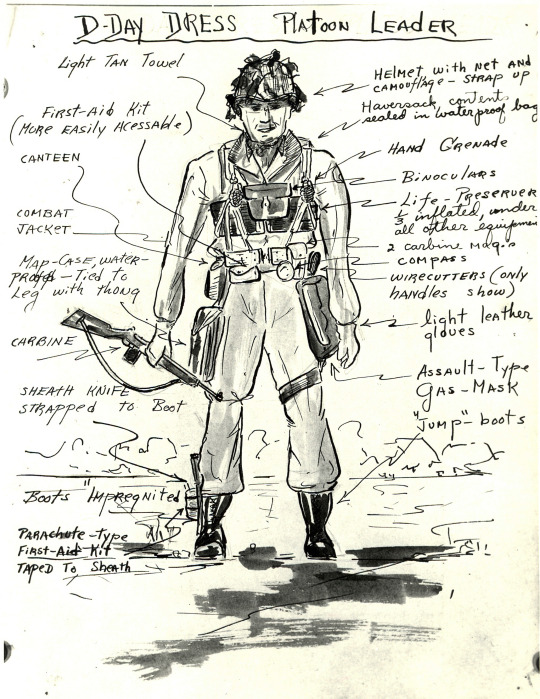
The largest seaborne invasion in history, D-Day saw troops land on five Normandy beaches, codenamed Utah, Omaha, Gold, Juno, and Sword. The assault started with airborne operations, and naval forces bombarded the coastal defenses before the landing of ground troops.
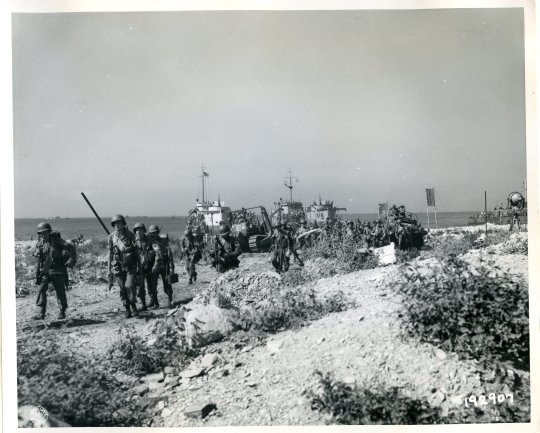
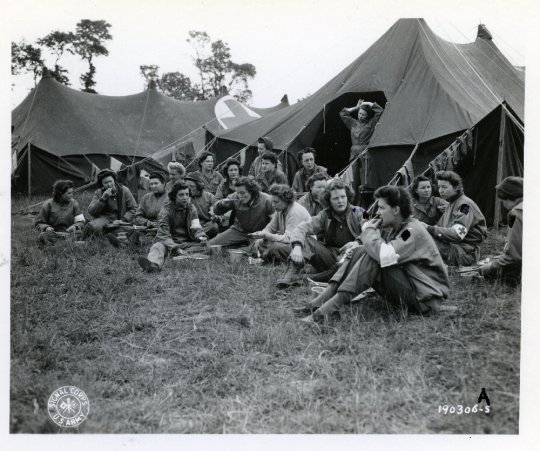
The D-Day invasion was a logistical feat. From deception tactics, such as Operation Fortitude, which misdirected German attention from Normandy, to the innovation of the Higgins boats, it showcased ingenuity as well.
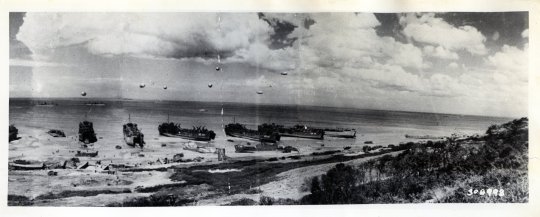
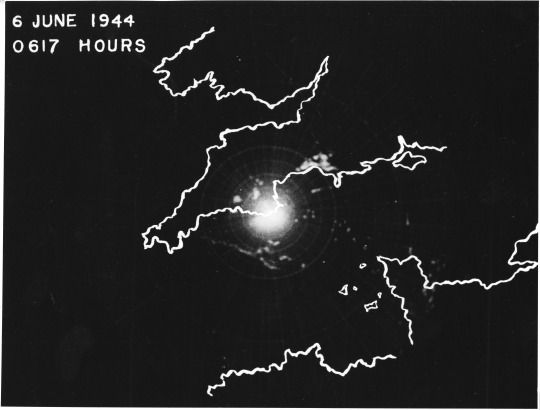
The cost was steep; the Allies suffered heavy casualties. Yet their bravery and sacrifice led to the successful establishment of a Western front in Europe, a crucial step towards liberating the continent from the Nazi German regime.
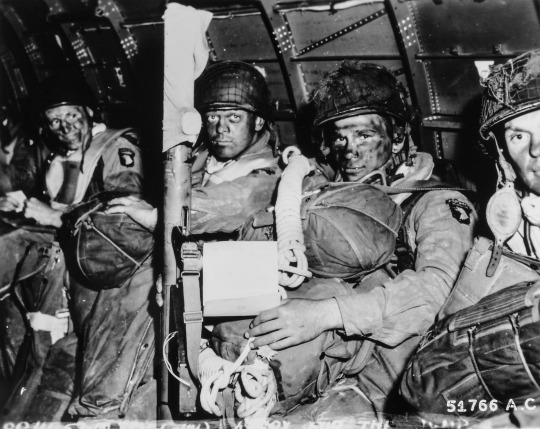
As we look back on this historic day, we remember the extraordinary courage and dedication of all those who fought for freedom on the shores of Normandy.
#national archives#history#archives#wwii#normandy#dday#operation overlord#world war 2#military#military history
161 notes
·
View notes
Text

Alex Lifeson (born Aleksandar Živojinović on August 27, 1953) is a Canadian musician best known as the guitarist and co-founder of the iconic rock band Rush. With his unique approach to guitar, Lifeson played a pivotal role in shaping the band's progressive rock sound, blending complex time signatures with rich, layered guitar tones. Lifeson’s versatility as a guitarist is one of his most celebrated traits. From intricate riffs in songs like "La Villa Strangiato" to the soaring leads in "Limelight" and "Tom Sawyer", his playing is both technically masterful and emotionally evocative. He pioneered the use of effects like chorus, delay, and flanger, which helped define Rush’s expansive sound, especially in the band’s more synth-heavy era of the '80s. Over a career spanning more than four decades, Lifeson, alongside bandmates Geddy Lee and Neil Peart, pushed the boundaries of rock music, gaining a loyal global fanbase. His influence extends far beyond Rush, inspiring generations of guitarists with his innovative technique, which merges progressive rock, jazz, and hard rock elements. Beyond Rush, Lifeson has pursued other musical projects, including solo work, and remains active in music and philanthropy. Inducted into the Rock and Roll Hall of Fame with Rush in 2013, Alex Lifeson is regarded as one of the greatest guitarists in rock history, known for his precision, creativity, and deep emotional resonance in his playing.
19 notes
·
View notes
Text
Exploring The History And Success Of A Canadian Car Company
Buckle up, gearheads! Today, we are revving our engines and taking a thrilling ride through the fascinating history and remarkable success of a Canadian car company that has left an indelible mark on the automotive industry. From its humble beginnings to conquering international markets, this company's journey is awe-inspiring. So, fasten your seatbelts as we dive into the exhilarating world of innovation, challenges, triumphs, and everything in between!
Impact On The Canadian Automotive Industry
Established decades ago, the Canadian car company has played a pivotal role in shaping and driving the automotive landscape within Canada. Its presence has bolstered the economy and fostered a sense of national pride in producing quality vehicles on home soil. The company's commitment to innovation and excellence has set new standards for the industry, inspiring others to push boundaries and strive for greatness.
This company has become an integral part of Canada's automotive sector by providing jobs, investing in research and development, and supporting local suppliers. Its impact ripples through various communities across the country, creating opportunities for growth and advancement. As a beacon of success in a competitive market, this Canadian car company continues to pave the way for future automakers to follow suit.
Expansion Into International Markets
The Canadian Car Company's expansion into international markets marked a significant milestone in its history. It opened up new opportunities for growth and global recognition, and by venturing beyond national borders, the company showcased its ability to compete globally.
With a strategic approach, the Canadian Car Company penetrated various international markets, adapting to different cultural preferences and regulations. This adaptability was crucial in establishing a strong presence in diverse regions worldwide.
The Canadian Car Company successfully introduced its vehicles to consumers worldwide through partnerships and collaborations with local distributors and dealerships. This approach not only boosted sales but also solidified the brand's reputation on an international level.
Expanding into international markets allowed the Canadian Car Company to showcase its commitment to innovation and quality across borders. The company's dedication to excellence resonated with customers globally, increasing demand for its vehicles.
Key Innovations And Technological Advancements
One key factor contributing to the success of this Canadian car company is its continuous focus on innovations and technological advancements. From the early days of manufacturing vehicles, they have strived to stay ahead of the curve by integrating cutting-edge technology into their designs. This commitment has allowed them to meet evolving consumer demands and set new industry standards.
The company's investment in research and development has led to breakthroughs in fuel efficiency, safety features, and overall performance. By harnessing the power of innovation, they have created cars that are not only reliable but also environmentally friendly. These advancements have positioned them as a leader in sustainable transportation solutions.
Moreover, this Canadian car company has incorporated advanced software and connectivity options into its vehicles through strategic partnerships with tech companies and suppliers. This forward-thinking approach has created smart cars that offer customers a seamless driving experience.
By staying at the forefront of technological progress, this Canadian car company continues to push boundaries and shape the future of automotive engineering.
Success Stories And Notable Achievements
One of the most renowned success stories in Canadian Car Company's history is its groundbreaking introduction of electric vehicles to the market. This bold move not only revolutionized the industry but also solidified the company's position as a forward-thinking and environmentally conscious automaker.
In addition, the company's commitment to innovation has led to numerous accolades and awards for its cutting-edge designs and advanced technology integration. Its dedication to pushing boundaries and setting new standards has earned it a loyal customer base around the globe.
Furthermore, their strategic partnerships with key players in the automotive sector have paved the way for collaborative projects that have further enhanced their brand reputation. These successful collaborations have resulted in mutually beneficial outcomes for all parties involved, showcasing Canadian Car Company's ability to thrive in competitive environments.
These notable achievements are testaments to the Canadian Car Company's unwavering commitment to excellence and continuous growth in the automotive industry.
Challenges faced by the company
Navigating the competitive landscape of the automotive industry, the Canadian Car Company has faced its fair share of challenges. From economic downturns to shifts in consumer preferences, staying ahead of the curve requires continuous innovation and adaptability.
One significant challenge has been balancing sustainability with performance in an environmentally conscious market. As regulations tighten, the company continues to address the delicate balance between investing in eco-friendly technologies and maintaining high-quality standards.
Moreover, global supply chain disruptions and fluctuating raw material costs have posed logistical hurdles for production and distribution. Finding efficient solutions to minimize delays and optimize operations remains a top priority for sustained growth.
Despite these obstacles, the Canadian Car Company's commitment to excellence and resilience has propelled it forward. By embracing change, fostering creativity, and prioritizing customer satisfaction, this iconic brand continues to make waves domestically and internationally.
As we reflect on its journey through history filled with achievements, innovations, and challenges, overcome, one thing is clear - the legacy of this Canadian car company will undoubtedly continue shaping the future of automotive excellence for years to come.

39 notes
·
View notes
Text
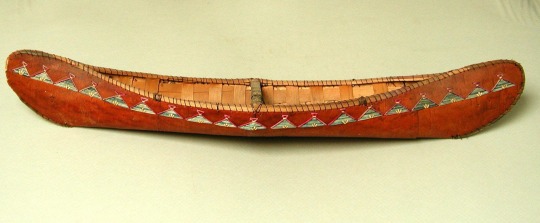
Chapter 11. ‘fucking close to water’: queering the production of the nation by Bruce Erickson (part 2, final)
Land
First ‘canoe’ that European colonists saw were likely Mi’kmaq gwitnn, birchbark boats designed for both ocean and river travel (318)
The colonist’s name is mentioned but the natives in these stories don’t ever get their names so…the colonist realized that to go further inland he would need the gwitn, he needed “the boat derived of the landscape realities of the new world” (Raffan 1999a, 24) (318)
the ‘canoe’ as a symbol unique to Canada (Jennings 1991, 1) (319), reworks essentialized aspects of indigenous cultures into a symbol of national health and success” (319) and as a “gift” from natives to settlers. The canoe as unique entity, because of the exploration done by canoe, the canoe is the guard that maintains the boundary of Canadian identity.
A vague connection could be made to the American symbol of the cowboy to the American west except the canoe is more ‘natural’ for being of the land and from the native people and further substantiated in its uniqueness by its use in colonialism.
Canada as a nation has ‘perfected’ the canoe; the only way the canoe can be made perfect is through its ability to be incorporated into European expansion (320) the connection of the land to the canoe as a discourse of inevitability illustrates the privileging of the European subject as the natural inheritors (indeed, the rightful inheritor) of First Nations land…and implicitly heterosexual and patriarchal subject (320-321)
Possibility
“We cannot possibly anticipate what might happen, if we were really to consider the ten million bodies at the bottom of the Atlantic Ocean "(Shannon Winnubst, 190) (324)

“Rethinking nature that is not bent toward the utility of power” (324) Opening ourselves to the possibilities of history means addressing the ways in which the ideologies and concrete practices that have formed our current understanding of nature represent more about the desired human outcome than they do about anything nonhuman (324)
Similar to really considering 10 million dead bodies in the Atlantic Ocean, this would mean really considering (as a broad list) the malicious wars over land and fur, the forced conversions, the repeated exposure to flu epidemics, the establishment of reservations and classification of First Nations as wards of the state, and the widespread physical and sexual abuse in residential schools designed to assimilate and civilize a supposed “savage” population” (324).


The Kiss of the Fur Queen is a novel by Tomson Highway, Cree playwright and novelist. Two Cree brothers are taken from their parents to a residential school several hundred miles away at the age of six, baptized into the Catholic church and have their names changed, they forbidden to speak their language and are abused by the priests of the school. They are alienated from their parents by the education and sexual predation of the school priests, but also are disconnected from the land, language and culture of their people…(the canoe plays a central role in the story, where difficult conversations about their alienation take place). As they grow up one of the brothers finds “continual inspiration” from the traditional Cree culture and discovered a “need to know the cultures that were suppressed by the residential school”. “As the crowd dances to the migisoo, the eagle, Gabriel realizes its power: ‘Gabriel saw people talking to the sky, the sky replying.” (Highway 1998) (324-326) (this is a poor summary, i apologize.)
“The movement between tradition and innovation is always fluid and uncharted” (327)
“Thus, while as a quirky national joke, the idea of making love in a canoe surely belongs to the post-sexual revolution of the later twentieth century, we need to remember that as a national symbol, the connection it strives to make between the canoe, nature, and nation signals a sexual politic that was born of the age of imperialism. “
“As Foucault reminds us, the legacy of the Victorian repression of sexuality is held within the resistance of the sexual revolution that fails to move outside the biopower networks of modern sexuality.” (327)
#queer ecologies: sex nature politics desire#colonialism#canada#biopower#first nations#foucault#canoes#canoeing#queer ecology#queer theory#environmental politics#heteronormativity#residential schools
22 notes
·
View notes
Text
THE SHROUDS (2024) First images from David Cronenberg's new film
The Shrouds is a 2024 horror film about an innovative businessman and grieving widower who builds a device to connect with the dead. Written and directed by David Cronenberg (Crimes of the Future; A History of Violence; eXistenZ; Dead Ringers; The Fly; The Dead Zone; Videodrome; Scanners; The Brood; Rabid; Shivers). The Canadian-French Prospero Pictures-SBS Productions movie stars Vincent Cassel,…
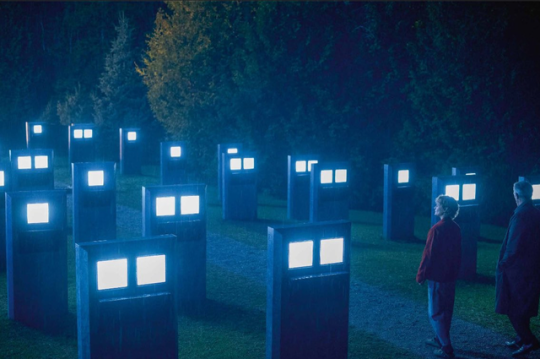
View On WordPress
#2024#Al Sapienza#David Cronenberg#Diane Kruger#Guy Pearce#horror#Ingvar Sigurdsson#movie film#preview#Sandrine Holt#Vincent Cassel
24 notes
·
View notes
Text

Royal Canadian Air Force celebrates its first Centenary
Fernando Valduga By Fernando Valduga 04/01/2024 - 23:07in Military
The Royal Canadian Air Force (RCAF) has reached the 100-year mark today. The beginning of the celebrations of the first centenary was marked with a ceremony in Edmonton.
As the Royal Canadian Air Force celebrates its 100º anniversary, Edmonton became the host of a moving recognition of its unwavering service to Canada. A historic air passage was carried out by the Tactical Helicopter Squadron "Goose" 408, adorning the skies above the legislative grounds of Alberta and marking the beginning of a six-month commemoration period throughout the country.

Helicopter overfly in Edmonton

The squadron's overflight was led by the veteran pilot and current deputy commander, Major Geoff Martin. With more than a decade of experience at RCAF and a personal connection with the service arising from childhood memories of admiring aircraft with his grandfather, Martin embodies the passion and dedication that have been the hallmark of the service in the last century.
The RCAF turns 100 today! ?
Today, we celebrate a century of excellence, courage, and innovation in the RCAF. As we mark this milestone, we extend our heartfelt gratitude to all the incredible individuals past and present who have played a part in shaping #YourAirForce. #RCAF100pic.twitter.com/9pcNaZcGlB
— Royal Canadian Air Force (@RCAF_ARC) April 1, 2024
The long-standing mission of the RCAF: to provide air defense, search and rescue and to assist in disaster relief, remains unchanged. An example of this dedication to domestic and international aid is Martin's deployment to Iraq, where he contributed significantly to Canadian operations.
Highlighting the festivities, Lieutenant-Gov. Salma Lakhani addressed the assembly and paid tribute to the noble history of the RCAF. The day was also marked by the elevation of the Elifer of the Royal Canadian Air Force within the legislative grounds and, later, the eminent structures of Edmonton, the High Level Bridge and the Jubilee Auditoriums, were illuminated in blue to signify the celebrations of the centenary of the RCAF.
In honour of the 100th anniversary of the @RCAF_ARC, buildings around the world are illuminated with blue lights, including the Canadian National Vimy Memorial in #France. ??
Comment ??? to show your support.
?: https://t.co/IvXsMxr3K4#RCAF100Years#CanadaRememberspic.twitter.com/l9jwsk67up
— Veterans Affairs CA (@VeteransENG_CA) April 1, 2024
Lieutenant-Colonel (Retired) Thomas Sand, who dedicated 35 years to the RCAF, highlighted the incredible experiences he accumulated during his administration, such as tracking submarines and traveling the world, but emphasized that the most beloved aspect of the service is the unity and respect promoted among its members.
As the country continues to honor the 100-year history of the RCAF, it is evident that the spirit of duty to the nation and humanity that once formed the backbone of the Royal Canadian Air Force remains as strong today as ever.
Happy 100th birthday to @RCAF_ARC! Thank you for 100 years of air support! sic itur ad astra ('Such is the pathway to the stars') The #RoyalCanadianAirForce's incredible history:https://t.co/00V93ycniM #RCAF100 #WeTheNavypic.twitter.com/ijSp63bAxh
— Royal Canadian Navy (@RoyalCanNavy) April 1, 2024
Since its creation on April 1, 1924, the Royal Canadian Air Force (RCAF) has played a key role in the history of Canada, contributing to the defense of the nation and participating in international operations. Its emergence faced significant challenges, evolving through technological advances and adapting to the changing nature of air warfare and peacekeeping.
Throughout World War II, Korea and NATO's Cold War missions, the RCAF grew in capacity and size. The integration of women and various multicultural groups in the service over time has also shaped the dynamics of the organization. Today, it operates a fleet of several aircraft, from fighters such as the CF-18 Hornet to transport aircraft such as the C-130 Hercules and maritime patrol aircraft such as the CP-140 Aurora.
Happy Centennial, Royal Canadian Air Force! ???
As we celebrate 100 years of soaring through the skies, the Canadian Armed Forces extends warmest congratulations to the@RCAF_ARC on this historic milestone. #RCAF100pic.twitter.com/7yAwvhR1qy
— Canadian Armed Forces (@CanadianForces) April 1, 2024
The aerospace industry has been a critical aspect of Canada's economy, contributing significantly to research and development, production and employment. Canada's Defense Policy, "Strong, Safe, Involved", describes significant investments aimed at improving the capabilities of the RCAF. This is expected to include the acquisition of 88 advanced F-35 fighter aircraft to replace the current CF-18 fleet, increasing the country's sovereignty and NORAD's obligations. These acquisitions and technological upgrades of current assets offer indications of potential market growth in the defense aerospace sector in Canada and around the world.
Attracting skilled labor remains a challenge in the aerospace industry, with demographic aging and competition from other sectors. In a broader scope, issues such as climate change and the need for sustainable development have pressured defense organizations to consider environmental impacts on their operations and innovations. In addition, cybersecurity and the emergence of space as a contested domain indicate that the RCAF, like its allies, must evolve to face new threats that go beyond the traditional roles of aerial superiority.
100 years for the @RCAF_ARC! It has been a privilege to serve our country with amazing Canadians. I want to honor those who have served and who continue to serve in Canada and around the world over the past century. #RCAF100 pic.twitter.com/g5SUXBX78D
— Joshua Kutryk (@Astro_Kutryk) April 1, 2024
The celebrations of the centenary of the RCAF not only define a historic milestone, but also stimulate reflection on its future path in the midst of a constantly evolving industry, with new challenges and opportunities. It serves as a reminder of the commitment and sacrifice of the men and women who have served and continue to serve under its flag - a commitment that remains an integral part of Canada's security and its global partnerships.
Tags: Military AviationHISTORYRCAF - Royal Canadian Air Force/Canada Air Force
Sharing
tweet
Fernando Valduga
Fernando Valduga
Aviation photographer and pilot since 1992, he has participated in several events and air operations, such as Cruzex, AirVenture, Dayton Airshow and FIDAE. He has works published in specialized aviation magazines in Brazil and abroad. He uses Canon equipment during his photographic work in the world of aviation.
Related news
Jet A-1A taxis at Santa Maria Air Base. (Photo: Fernando Valduga / Cavok Brazil)
BRAZILIAN AIR FORCE
Even with possible retirement of A-1 jets, Santa Maria Air Base will not close, according to commander
01/04/2024 - 21:28
MILITARY
Journalists were reprimanded for stealing souvenirs aboard U.S. Air Force One
01/04/2024 - 18:55
MILITARY
Nordic nations consider military changes with NATO in mind
01/04/2024 - 16:00
Aerial view of Okinawa airport.
AIRPORTS
Japan plans to upgrade 16 airports and ports for military use
01/04/2024 - 15:00
MILITARY
AERALIS signs memorandum of understanding with Red 6
01/04/2024 - 14:00
INTERCEPTIONS
Venezuelan F-16 slaughters "hostile" aircraft that invaded the country's airspace
01/04/2024 - 08:32
15 notes
·
View notes
Text
King Kendrick

In the annals of hip-hop history, clashes between titans have always stirred the collective imagination of fans worldwide. But in the contemporary era, few face-offs have generated as much anticipation, hype, and controversy as the legendary showdown between Kendrick Lamar and Drake in "Not Like Us."
Released amidst a storm of speculation and heightened expectations, "Not Like Us" instantly became a battlefield where two of the genre's most influential figures squared off. Kendrick Lamar, hailed for his introspective lyricism and uncompromising authenticity, faced off against Drake, the Canadian superstar known for his melodic hooks and versatile flow.
From the opening bars, it was evident that "Not Like Us" was not just another rap skirmish; it was a declaration of artistic dominance. Kendrick Lamar's razor-sharp wordplay sliced through the track like a blade, delivering a barrage of potent verses that showcased his unparalleled storytelling prowess and keen social commentary.
But Drake, never one to back down from a challenge, unleashed his own arsenal of verbal dexterity and sonic innovation. His verses were characterized by trademark wit and infectious charisma, proving once again why he stands as one of the most commercially successful artists of his generation.
As the battle raged on, each artist took turns delivering knockout blows, trading lyrical jabs with precision and finesse. The tension reached a fever pitch as fans and critics alike debated who would emerge victorious in this clash of titans.
In the end, it was Kendrick Lamar who emerged triumphant, his victory solidified by the sheer force of his artistic vision and unwavering commitment to his craft. His verses cut deep, resonating with audiences on a visceral level and cementing his status as one of the greatest wordsmiths of his generation.
But perhaps the true winner of "Not Like Us" was hip-hop itself. In a genre often plagued by petty feuds and manufactured beefs, Kendrick Lamar and Drake's battle was a testament to the power of artistic expression and healthy competition. It reminded us that at its core, hip-hop is about pushing boundaries, challenging norms, and elevating the culture to new heights.
As the dust settles and the echoes of "Not Like Us" reverberate through the halls of hip-hop history, one thing is clear: Kendrick Lamar's victory was not just a triumph for himself, but for all those who dare to defy expectations and carve their own path in the world of music.
10 notes
·
View notes
Text
Sunday, January 12, 2024 Canadian TV Listings (Times Eastern)
WHERE CAN I FIND THOSE PREMIERES?: ROGUE HEROES (MGM +)
WHAT IS NOT PREMIERING IN CANADA TONIGHT?: ALL CREATURES GREAT AND SMALL (PBS Feed) MISS SCARLET (PBS Feed)
NEW TO AMAZON PRIME CANADA/CBC GEM/CRAVE TV/DISNEY + STAR/NETFLIX CANADA:
AMAZON PRIME CANADA MY INTERNSHIP IN CANADA SAS ROGUE HEROES (Season 2) SUR LE RYTHME SUR LE SEUIL
2025 IIHF U18 WOMEN'S HOCKEY (TSN3/TSN5) 8:00am: Bronze Medal - TBD vs. TBD (TSN5) 12:00pm: Gold Medal - TBD vs. TBD
PWHL HOCKEY (TSN3) 12:00pm: Sceptres vs. Sirens (TSN3) 3:00pm: Victoire vs. Frost
NFL FOOTBALL (TSN/TSN4) 1:00pm: Wild Card - Broncos vs. Bills (TSN/TSN4) 4:30pm: Wild Card - Packers vs. Eagles (TSN/TSN4/TSN5) 8:15pm: Wild Card - Commanders vs. Buccaneers
NHL HOCKEY (SN) 3:00pm: Kraken vs. Red Wings (SN1) 5:00pm: Lightning vs. Penguins (TSN5) 5:00pm: Stars vs. Sens (SN) 8:00pm: Wild vs. Knights
NBA BASKETBALL (TSN2) 3:00pm: Nuggets vs. Mavericks (SN1) 9:00pm: Hornets vs. Suns
ERIC STAAL JERSEY RETIREMENT CEREMONY (SN Now) 3:30pm
2025 AUSTRALIAN OPEN TENNIS (TSN2/TSN3) 7:00pm: Early Round Coverage Day #2
THE GREAT BRITISH BAKING SHOW (CBC) 7:00pm: It's Biscuit Week and the bakers make a marshmallow-based signature challenge, a custard classic in the technical; in an illusion-themed showstopper, the bakers make their favorite meal out of biscuits.
CRIME BEAT (Global) 7:00pm: 'Die Like the Rest' Part 1: A Winnipeg teenager is found savagely attacked; investigators arrest a B.C. man who was visiting; years later, another slaying of a teenage girl gives fresh light to old evidence that could help convict a killer.
FAMILY LAW (Global) 8:00pm: When a biased judge rules against Daniel's petition to have a scam marriage annulled, Abby uses Cecil as bait to trap the romance fraudster.
WARDENS OF THE NORTH (CTV Wild) 8:00pm: A warden checks on a hunter he suspects may be illegally baiting deer; a warden tracks down hunters using blinds on state land and finds they aren't quite abiding by the law; wardens enforce the law with anglers on the Detroit River.
SKYMED (CBC) 9:00pm: As the crew struggles to say a difficult goodbye to a fallen team member, the loss forces each of them to question themselves in different ways.
FOOD, INC. 2 (documentary) 9:00pm: Revisiting the food system and its improvements, focusing on innovative farmers and food producers working toward a healthier future.
WHEN CALLS THE HEART (Super Channel Heart & Home) 9:00pm: When the comic book craze sweeps Hope Valley, Elizabeth teaches her students through nature; Rosemary launches a radio show and Lucas meets a new political player.
THE CURSE OF OAK ISLAND (History Channel Canada) 10:00pm: After more than a dozen years of searching, the team may have discovered the legendary Chappell Vault.
FORENSIC FACTOR (Oxygen Canada) 10:00pm (SEASON PREMIERE): A mother of three goes missing the day before Mother's Day; there is no shortage of suspects, but only forensic evidence and an old school detective's trick can untangle what truly happened to Joleen Cummings.
#cdntv#cancon#canadian tv#canadian tv listings#the great british baking show#crime beat#family law#wardens of the north#skymed#when calls the heart#the curse of oak island#iihf u18 women's hockey#pwhl hockey#nfl football#nhl hockey#nba basketball#tennis
2 notes
·
View notes
Text
2024 Reading List
It is that time of year again. I used to do a full listing of all the books I read in the year but now that I read so much that's a little challenging, so I'm doing my top five reads in each category!
Fiction
Playboy by Constance Debre translated by Holly James
I don't usually enjoy autofiction but this novel knocked it out of the part. A tale of a woman discovering and exploring her lesbianism in middle age. It's tight, fast paced, often acerbic, and does not shy away from the ugliness of being a person in the world. I look forward to the Debre's next novel in this series.
Grimmish by Michael Winkler
This is hands down the best book I read all year. It's strange, it's weird, it innovates genre. This novel is sort of a non-fiction historical treatise on the American wrestler Joe Grim. However, the structure and form of the novel flies in the face of all novelistic convention. It is experimental fiction of the highest order and an incredibly interesting deconstruction of the meaning of masculinity and pain.
The Piano Teacher by Elfriede Jelinek translated by Joachim Neugroschel
On the topic of gender and pain, this novel is phenomenal. Its status as a classic is well deserved. The richness and complexity of Erika's relationship to her mother, to herself, and to Walter is so engrossing. Despite how painful the novel is to read, it is also impossible to put down. It is well deserving of the fantastic film with which it shares a name.
The Troop by Nick Cutter
A thrilling and grotesque novel about the outbreak of an unknown pathogen amongst some teenage boys on a remote Canadian island. This book, like a lot of the others on this list, plumbs the depths of masculinity and finds it wanting. Also the horrifying descriptions of infection are haunting and will satisfy those readers looking for a truly grotesque horror novel.
The Bitch by Pilar Quintana translated by Lisa Dillman
Set in the author's native Colombia, the central character Damaris spends her days cleaning the mansion of a wealthy family who has not returned to their vacation home in years. Unable to have children, she tries to fill her need to love and dote on someone by adopting a dog. The novel is sparing, unflinching, and powerful.
Poetry
Let the World Have You by Mikko Harvey
A wonderfully imaginative collection in the vein of Charles Simic. It's full of a kind of magical realism that you often don't see in American poetry and is additionally hard to pull off. This collection is a beautiful addition to the tradition.
Frightening Toys by Charles Simic
What can I say! I love Charles Simic! I love his fantastic (in the sense of fantasy) poetry. I have nothing else to say.
Soft Science by Franny Choi
This is a poetry collection that builds world with its own logic and characters. I was particularly compelled by the cyborg poems, which so skillfully play with language and sound. The cyborg poems represent the strength of this collection, which lies in its extended metaphor around machinery as woman and as dehumanized other.
The Virginia State Colony for Epileptics and Feebleminded by Molly McCully Brown
This collection imagines the voices of the residents of the Virginia State Colony, their sorrow, their suffering, and also their joys. It takes names of otherwise unknown people off of the page and inhabits them with light and dignity. A deeply moving collection.
Nonfiction
The Infernal Machine: A True Story of Dynamite, Terror, and the Rise of the Modern Detective by Steven Johnson
An incredibly illuminating and well written exploration of the history of anarchism in the United States and how that trajectory leads to the police surveillance state we have today. I cannot recommend this book enough if you want to understand the history of leftist radicalism in the US.
Into the Raging Sea: Thirty-Three Mariners, One Megastorm, and the Sinking of the SS El Faro by Rachel Slade
I love a good disaster book and this one is truly great. Rich with detail and thoughtful story telling, this book methodically tells the nearly incomprehensible story of the 2015 sinking of the SS El Faro. The only place in which I found the book wanting was in its analysis of the systematic issues that allow a disaster like this to happen. I wanted an indictment of the system that allowed this accident to happen, which the book does not deliver.
Graphic Novels and Art Books
firebugs by Nino Bulling
A beautiful and tender story about love, growth, and being transgender. I know that we on tumblr all love t4t relationships but this book explores how complicated a relationship like that can really bit. It's a bittersweet and necessary story that gave me reassurance about my own experience with t4t relationships.
The Parade: A Story in 55 Drawings by Si Lewen
Gorgeously rendered and terrifying, this book is one artist's representation of the ravages of war. Published in 1957, it deals directly with the artists experience as a Polish Jew serving in the US Army during WWII. This collection is not a graphic novel and was originally presented as a exhibit in 1951. Yet, it is not exactly an art book either. There is no statement, no essay from a reviewer. Lewen lets his images speak for themselves, to great effect.
Metamorphadox by Jarrett Heckbert
What a wildly imaginative and strange book. It deals with war, mechanization, loneliness, and more. Really a book better experienced than explained.
Death of the Master by Patrick Kyle
With minimal language and a wonderfully unique style, this novel explores a world of charismatic but distant leaders and incomprehensible but ever present work. Using magical realism and principles of the bizarre, this novel reveals the strangeness of our current work culture and its leaders.
Majnun and Layla: Songs from Beyond the Grave by Yann Damezin translated by Thomas Harrison and Aqsa Ijaz
This volume retells, yet again, the classic Persian tale of Majnun and Layla with absolutely stunning visuals. I am comfortable saying that this Damezin's version is a work of art in its own right. Every page is gorgeous and the novel is a treat to experience.
Plays
God of Vengeance by Sholem Asch translated by Isaac Goldberg
A Yiddish play about lesbians written in 1907? More likely than you think. This play is so interesting in its moral quandaries. It centers around a father who wants become respectable by marrying his daughter off to a yeshiva student and in doing so must face himself and his own moral failings. The history of the plays production in the US is also fascinating and worth reading up on.
The Lower Depths by Maxim Gorky translated by Jenny Covan
A classic of social realism, this play shows us the lives of poor Russians living in a basement shelter. The characters are rich and memorable and particularly the actor haunts me to this day. I can see the influence of this play on much of the literature that comes after.
Ghosts by Henrik Ibsen translated by William Archer
In the 1906 production of this play in Berlin, Austrian director Max Reinhardt commissioned Edvard Munch to do the set design. Munch decided that the set would be dominated by a large black armchair, which should almost be its own character in the play. I thought about that the whole time I read the play. How it is dominated by a cold, dark, and oppressive domestic space where secrets and betrayal are destroying the family. This play so clearly had an influence on the film Festen, which later went on to influence Succession, and having read it, I can see why.
Spring Awakening by Frank Wedekind translated by Francis J. Ziegler
Another classic that I had not read until this year. I feel no need to explain or defend this play; it stands on its own merits.
@uglyseasonmp3 @desperately-human @highawkseason @the-glow-pt-420
#reading list#book reccs#reading recommendations#anyway feel free to ask me anything about any of these :)
3 notes
·
View notes
Text
Ice dancers Tessa Virtue and Scott Moir to enter Canada's Sports Hall of Fame
September 7, 2023

OTTAWA — Decorated ice dance duo Tessa Virtue and Scott Moir and mixed martial arts star Georges St-Pierre were among the 2023 inductees named to Canada's Sports Hall of Fame on Thursday.
Randy Ferbey's curling team, wheelchair basketball player Danielle Peers and softball player Phyllis Bomberry will also be inducted as athletes, with judo coach Hiroshi Nakamura and lacrosse pioneer Oren Lyons joining them as builders.
This year's inductees were announced at the Canadian Museum of History in Gatineau, Que., where the Hall's artifact collection is now housed.
At their induction ceremony Oct. 19, the class of 2023 will join over 700 people named to the Hall since it was established in 1955.
Since 2019, inductees have received the Order of Sport from the Hall for their role in building Canada through sport.
Ice dancers Virtue of London, Ont., and Moir of Ilderton, Ont., won two Olympic gold medals and one silver as well as three world titles during their career.
Virtue called hearing about the induction a "surreal" moment.
"It's so exciting and moving and overwhelming. You know, now that we're a few years post retirement, you don't think of the accolades coming in the same way," she said. "So to to be recognized for our accomplishments in sport and to have the benefit of having a little bit of perspective on our career is so delightful. It's just an incredible honour."
Moir has transitioned to coaching, while Virtue works for Deloitte as an executive adviser.
The duo pushed boundaries of their sport with innovative choreography and skated with emotional depth in dazzling performances.
"Sport in general, as you well know, is in a difficult time right now," said Virtue.
"And especially the Olympic movement, we've seen a lot of shifts, a lot of changes. It's easier to get disillusioned by sort of the politics of it all, but when we can hone in on all of the exceptional things that sport offers, especially these next generations, I think that's really empowering and inspiring to me."
—Yahoo
#tessa and scott#off ice#honor#order of sport 2023#interview: yahoo#i totally get what tessa means#with her last quote#but disillusioned has a purpose too
23 notes
·
View notes
Text
youtube
Ten Key Innovation Signals To Better Serve The Brain Health Needs Of An Aging Population
It's been a busy year, with hundreds of studies and media stories about this website brain health, neuroplasticity, lifestyle and emerging neurotechnologies. To summarize where we are, and to better prepare for the opportunities and challenges in the year ahead, let's step back for a minute. Let me highlight Ten Important Signals to help Reinvent Brain Health in the Digital Age we live in.
It's been a busy year, with hundreds of studies and media stories about brain health, neuroplasticity, lifestyle and emerging neurotechnologies.
To summarize where we are, and to better prepare for the opportunities and challenges in the year ahead, let's step back for a minute.
Let's take a look at the big picture presented in the article Both Important and Urgent: Getting ready to serve the Cognitive & Brain Health needs of an Aging Population, prepared by David Stoller at the new Canadian Centre for Aging and Brain Health Innovation (CC-ABHI):
"The urgency to develop innovative new technologies that will support brain health is closely linked to the fact that a growing proportion of the global population is living longer than at any other time in history. As this population ages, the need to maintain brain health and/or manage declining cognitive function will have far-reaching impact both socially and economically." -- David Stoller @ CC-ABHI.
Good news is, scientists, technologists and entrepreneurs are working hard on this in the US and abroad.
The list of insights and initiatives worldwide is too long to detail; let me just highlight Ten Important Signals to help Reinvent Brain Health in the Digital Age we live in:
"Our health starts and ends with brain health," as Dr. Sandra Bond Chapman, Founder and Chief Director of the Center for BrainHealth at The University of Texas at Dallas, reminds us.
"There is too little wisdom in brain health (as practiced today)," cautions Dr. Peter Whitehouse, Professor of Neurology at Case Western Reserve University.
The American Academy of Clinical Neuropsychology (AACN) just announced a new Disruptive Technology Initiative focused on "assessment and/or intervention-prevention-improvement of cognitive functions, accessible to the entire population."
Both the National Institute of Mental Health (NIMH) and the Canadian Centre for Aging and Brain Health Innovation (CC-ABHI) have substantial funding programs to help start-ups access seed capital to develop and commercialize evidence-based digital brain health platforms.
Venture investors see a burgeoning landscape and future of the mind training space.
Many pioneers are working on ways to harness neuroplasticity for good, via cognitive assessments and therapies (BrainHQ, Akili, Click Therapeutics, Cogniciti, SBT Group) mindfulness apps (Claritas Mindsciences), EEG (Emotiv) and virtual reality (MindMaze).
A growing number of pharma companies, from Merck to Janssen, are investing in digital therapeutics by developing tools, licensing them, even investing in start-ups in the space.
"Clinically-guided" video capture of behavior can aid in diagnosis…behavior imaging, augmented by deep learning, will lead to real precision medicine, thanks to firms like Behavior Imaging Solutions, MyndYou, Pear Therapeutics, and more.
Old and new players in education--Pearson, ETS, UC Berkeley, the Arrowsmith School-- are developing digital and in-person programs to promote lifelong brain development.
The Coaches and Psychologists of the Future-exemplified by the Institute of Coaching, The Synapse System, the new Watson Centre for Brain Health-are already augmenting their practices with latest brain & cognition findings and digital neurotechnologies.
2 notes
·
View notes
Text
youtube
Key Innovation Signals To Better Serve The Brain Health Needs Of An Aging Population
It's been a this website busy year, with hundreds of studies and media stories about brain health, neuroplasticity, lifestyle and emerging neurotechnologies.
To summarize where we are, and to better prepare for the opportunities and challenges in the year ahead, let's step back for a minute.
Let's take a look at the big picture presented in the article Both Important and Urgent: Getting ready to serve the Cognitive & Brain Health needs of an Aging Population, prepared by David Stoller at the new Canadian Centre for Aging and Brain Health Innovation (CC-ABHI):
"The urgency to develop innovative new technologies that will support brain health is closely linked to the fact that a growing proportion of the global population is living longer than at any other time in history. As this population ages, the need to maintain brain health and/or manage declining cognitive function will have far-reaching impact both socially and economically." -- David Stoller @ CC-ABHI.
Good news is, scientists, technologists and entrepreneurs are working hard on this in the US and abroad.
The list of insights and initiatives worldwide is too long to detail; let me just highlight Ten Important Signals to help Reinvent Brain Health in the Digital Age we live in:
"Our health starts and ends with brain health," as Dr. Sandra Bond Chapman, Founder and Chief Director of the Center for BrainHealth at The University of Texas at Dallas, reminds us.
"There is too little wisdom in brain health (as practiced today)," cautions Dr. Peter Whitehouse, Professor of Neurology at Case Western Reserve University.
The American Academy of Clinical Neuropsychology (AACN) just announced a new Disruptive Technology Initiative focused on "assessment and/or intervention-prevention-improvement of cognitive functions, accessible to the entire population."
Both the National Institute of Mental Health (NIMH) and the Canadian Centre for Aging and Brain Health Innovation (CC-ABHI) have substantial funding programs to help start-ups access seed capital to develop and commercialize evidence-based digital brain health platforms.
Venture investors see a burgeoning landscape and future of the mind training space.
Many pioneers are working on ways to harness neuroplasticity for good, via cognitive assessments and therapies (BrainHQ, Akili, Click Therapeutics, Cogniciti, SBT Group) mindfulness apps (Claritas Mindsciences), EEG (Emotiv) and virtual reality (MindMaze).
A growing number of pharma companies, from Merck to Janssen, are investing in digital therapeutics by developing tools, licensing them, even investing in start-ups in the space.
"Clinically-guided" video capture of behavior can aid in diagnosis…behavior imaging, augmented by deep learning, will lead to real precision medicine, thanks to firms like Behavior Imaging Solutions, MyndYou, Pear Therapeutics, and more.
Old and new players in education--Pearson, ETS, UC Berkeley, the Arrowsmith School-- are developing digital and in-person programs to promote lifelong brain development.
The Coaches and Psychologists of the Future-exemplified by the Institute of Coaching, The Synapse System, the new Watson Centre for Brain Health-are already augmenting their practices with latest brain & cognition findings and digital neurotechnologies.
2 notes
·
View notes
Text

"What is the relationship between criminal law and settler colonialism? In Thresholds of Accusation, George Pavlich presents an erudite and compelling genealogy of criminal accusation as a long process of criminalization that continues to conceal the coercive and violent effects of settler colonialism on Indigenous communities today. Pavlich asks us to consider how the vast inequities in the Canadian criminal justice system, especially the overrepresentation of Indigenous peoples, are the effects of what he calls ‘a dispossessing colonial rule by law.’ The book is brimming with theoretical and methodological insights. Pavlich distills his arguments of accusation as a performative foundation of colonial law through close readings of archival documents. His analysis repudiates archival research as historical discovery and offers innovative methods for writing legal history. This is a must read."
9 notes
·
View notes
Text

Food is our love language//Nuit Blance, Toronto!
Eat More Scarborough + Scarborough Arts: We're excited to welcome Gordan Sumanski to our upcoming night food tour to give an artist talk titled "Food is Our Love Language"! Gordan Sumanski, is a Serbian-Canadian digital art and content creator with a deep-rooted passion for food and travel. Hailing from a family with a rich history in the food industry, he effortlessly blends tradition with innovation. Gordan’s creativity in the kitchen knows no bounds, crafting diverse dishes that are not only delicious but also visually captivating.
Join us on the upcoming night food tour https://www.eventcreate.com/e/nuit-blanche-night-tour
#scarborough#nuit blanche#toronto#canada#ontario#food#love language#gordansumanski#artists on tumblr
2 notes
·
View notes